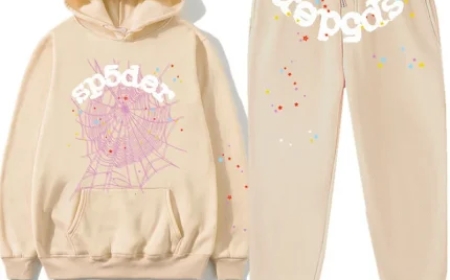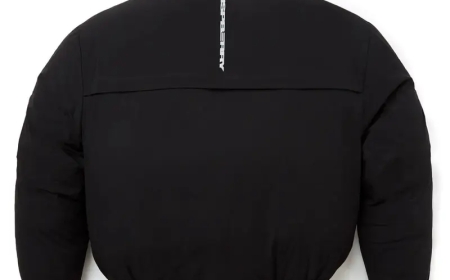COMME des GARÇONS: The Art of Disruption in Fashion
Shop Buy Comme des Garcons Challenges Fashion Norms. Explore its History, Statement Pieces, and Global Collaborations in This 2025 Guide.

COMME des GARONS, the avant-garde Japanese fashion label founded by Rei Kawakubo in 1969, is not just a brandit is a movement, a philosophy, and an enduring legacy of rebellion against the norms of the fashion industry. Known for its deconstructed silhouettes, anti-fashion ethos, and conceptual presentations, COMME des GARONS (often abbreviated as CdG) has carved out a unique niche where creativity thrives on the edge of discomfort, ambiguity, and radical innovation. This 1000-word exploration delves into the roots, evolution, cultural impact, and timeless appeal of the label that continues to challenge what fashion can be.
Origins and Philosophy
Rei Kawakubo, the enigmatic mastermind behind COMME des GARONS, started the label in Tokyo in 1969. Coming from an academic background in fine arts and literature, Kawakubo had no formal training in fashion design. This lack of conventional education became her strength. She approached fashion as an artistic expression, unconcerned with the traditional aesthetics of beauty or wearability.
The brand's name, which translates to "like boys" in French, symbolizes its initial vision of challenging gender norms in fashion. From the beginning, CdG garments defied femininity as traditionally understood, embracing androgynous, asymmetrical, and oversized shapes. Kawakubo aimed to provoke thought, not just to clothe bodies.
Breaking into the Global Scene
CdG first made waves internationally in the early 1980s. Its Paris debut in 1981 was both revolutionary and controversial. Kawakubo sent models down the runway in black, tattered, and oddly-shaped garments, which sharply contrasted with the era's glamorous fashion trends. Critics called it "Hiroshima chic" and claimed the designs were ugly, but Kawakubo embraced these criticisms, stating that her goal was to create something that didnt exist before.
This radical show positioned COMME des GARONS as a pioneer of anti-fashiona movement that opposes mainstream, consumer-driven fashion ideals. By rejecting norms of symmetry, perfection, and mass appeal, CdG redefined what high fashion could mean.
Design Aesthetic: Deconstruction and Beyond
The hallmark of COMME des GARONS' aesthetic lies in its deconstructed approach to design. Pieces are often unfinished, asymmetric, or inside-out. Kawakubo plays with volume, texture, and layering to create garments that are more sculptural than wearable. Each collection is a statement, sometimes political, sometimes philosophical, but always uncompromising.
Throughout the decades, Kawakubo has explored numerous themesdeath, war, identity, and imperfectionusing fabric as her language. Whether it's the lumpy Body Meets Dress, Dress Meets Body collection of Spring/Summer 1997 or the haunting Broken Bride collection of Fall/Winter 2005, CdG collections challenge the viewer emotionally and intellectually.
Kawakubo once said, The only way of doing something new is not to set out to design something new but to set out to design something not to design something. This paradoxical statement captures the essence of her disruptive creativity.
Expansion Through Sub-Labels and Collaborations
COMME des GARONS is not just a single line but a constellation of sub-labels, each with its own identity. These include:
-
COMME des GARONS Homme Plus the most avant-garde of the menswear lines.
-
COMME des GARONS Play a more casual, youthful line known for the iconic heart-with-eyes logo.
-
COMME des GARONS SHIRT focusing on reinterpreted classic menswear.
-
COMME des GARONS Noir a darker, more elegant take on CdG aesthetics.
In addition to these, Rei Kawakubo has nurtured emerging talent through the Dover Street Market concept store, an innovative retail space that promotes artistic fashion from around the world.
The brand has also engaged in high-profile collaborations that blend high fashion with streetwear. Notable partnerships include:
-
Nike avant-garde sneakers that merge sport and style.
-
Converse the popular PLAY CdG Chuck Taylor series.
-
Supreme merging underground cool with high fashion credibility.
-
Gucci and Louis Vuitton unexpected pairings that celebrate creative synergy.
These collaborations have helped COMME des GARONS stay relevant across generations and demographics, bridging the gap between fashion elitists and everyday consumers.
Cultural Influence and Legacy
Few fashion houses can claim the cultural relevance that COMME des GARONS has maintained for over five decades. Beyond fashion, it has permeated art, music, and pop culture. Celebrities like Rihanna, Kanye West, Pharrell Williams, and Lady Gaga have all been spotted wearing CdG pieces, using them as visual symbols of rebellion and innovation.
The brand has also had a profound influence on fellow designers. Fashion luminaries like Martin Margiela, Yohji Yamamoto, and even designers at Balenciaga and Vetements have acknowledged the impact of Kawakubos boundary-pushing philosophy.
In 2017, Kawakubo became only the second living designer (after Yves Saint Laurent) to be honored with a solo exhibition at the Metropolitan Museum of Arts Costume Institute. The exhibit, Rei Kawakubo/Comme des Garons: Art of the In-Between, highlighted the brands role in blurring the lines between fashion and art, body and clothing, beauty and grotesque.
Rei Kawakubo: The Woman Behind the Brand
Despite her massive influence, Rei Kawakubo is famously reclusive and rarely gives interviews. She prefers to let her work speak for itself. Her approach is intellectual and deeply personal. Unlike many fashion designers who build brands around their personalities, Kawakubos persona remains elusiveadding to the mystique of COMME des GARONS.
She continues to design actively, always pushing boundaries. Even at an age when many of her peers have retired, Kawakubo remains at the helm of her brand, proving that innovation doesnt come with an expiration date.
The Future of COMME des GARONS
As fashion becomes increasingly commercialized, COMME des GARONS stands as a beacon of authenticity and radical expression. Its refusal to conform has allowed it to maintain its integrity in an industry often dictated by trends and sales targets.
The next generation, including Kawakubos husband Adrian Joffe and designers shes mentored, continues to uphold the brands ethos. With Dover Street Markets global expansion and the increasing popularity of CdG Play and other accessible sub-labels, the brand maintains both underground credibility and mainstream allure.
Conclusion
COMME des GARONS is not just a clothing label; its an institution of creative rebellion. Through Rei Kawakubos vision, the brand has become a testament to the power of non-conformity in fashion. Its refusal to play by the rules, its Essentials hoodie ability to provoke and inspire, and its dedication to art over commerce make it one of the most respected and enduring forces in global fashion.
In an era when originality is often sacrificed for virality, COMME des GARONS reminds us that fashion can still be a powerful form of expressionone that challenges, questions, and transcends.

































